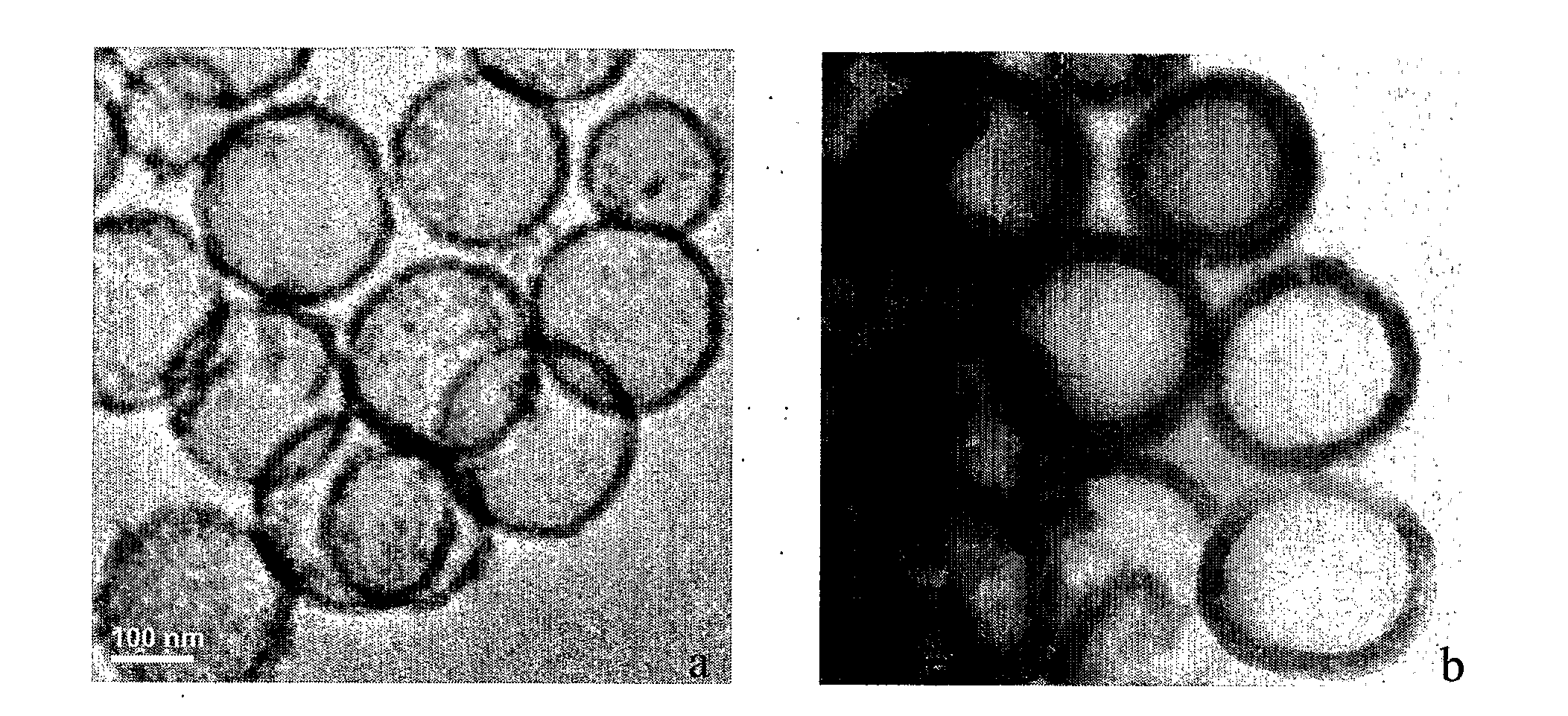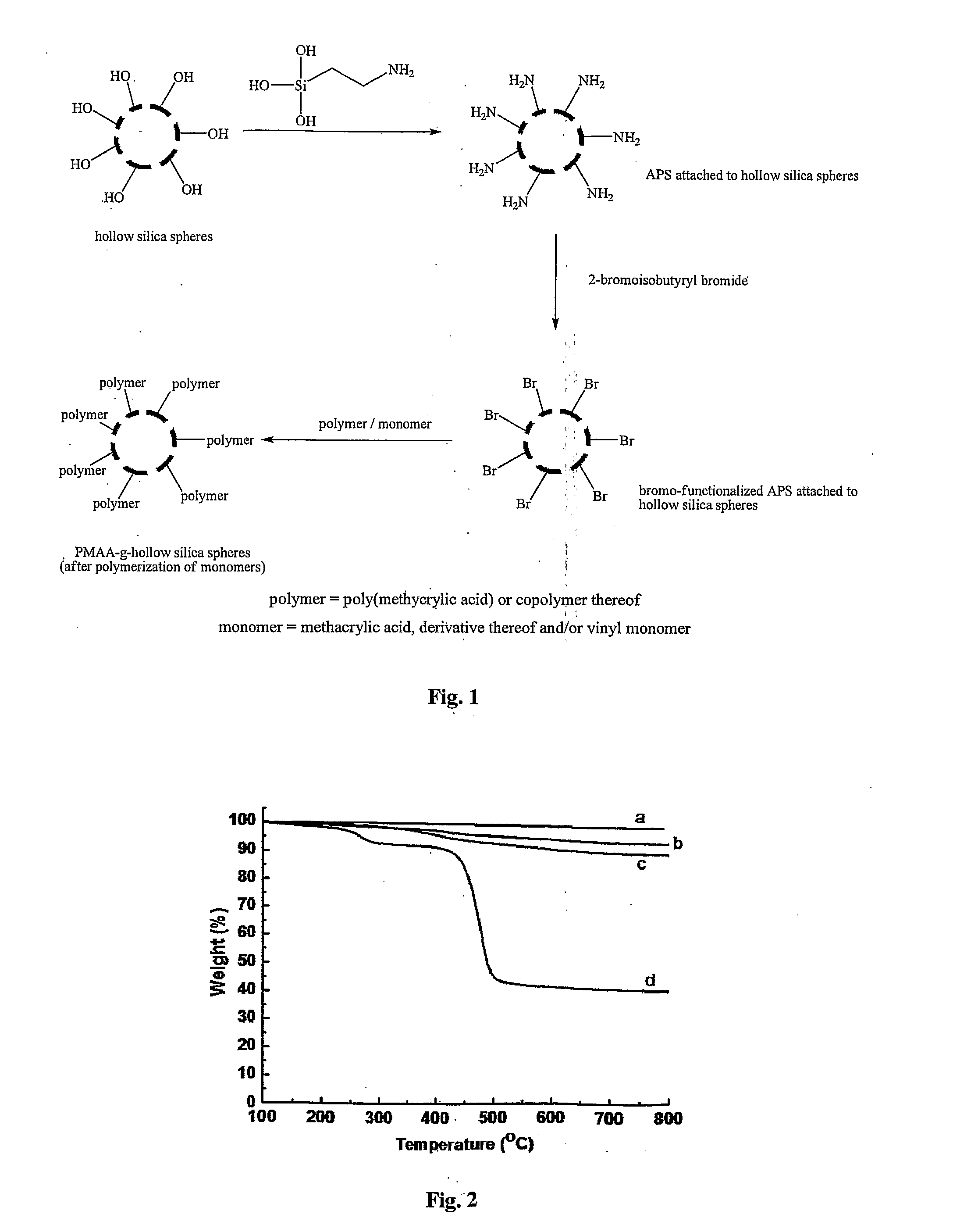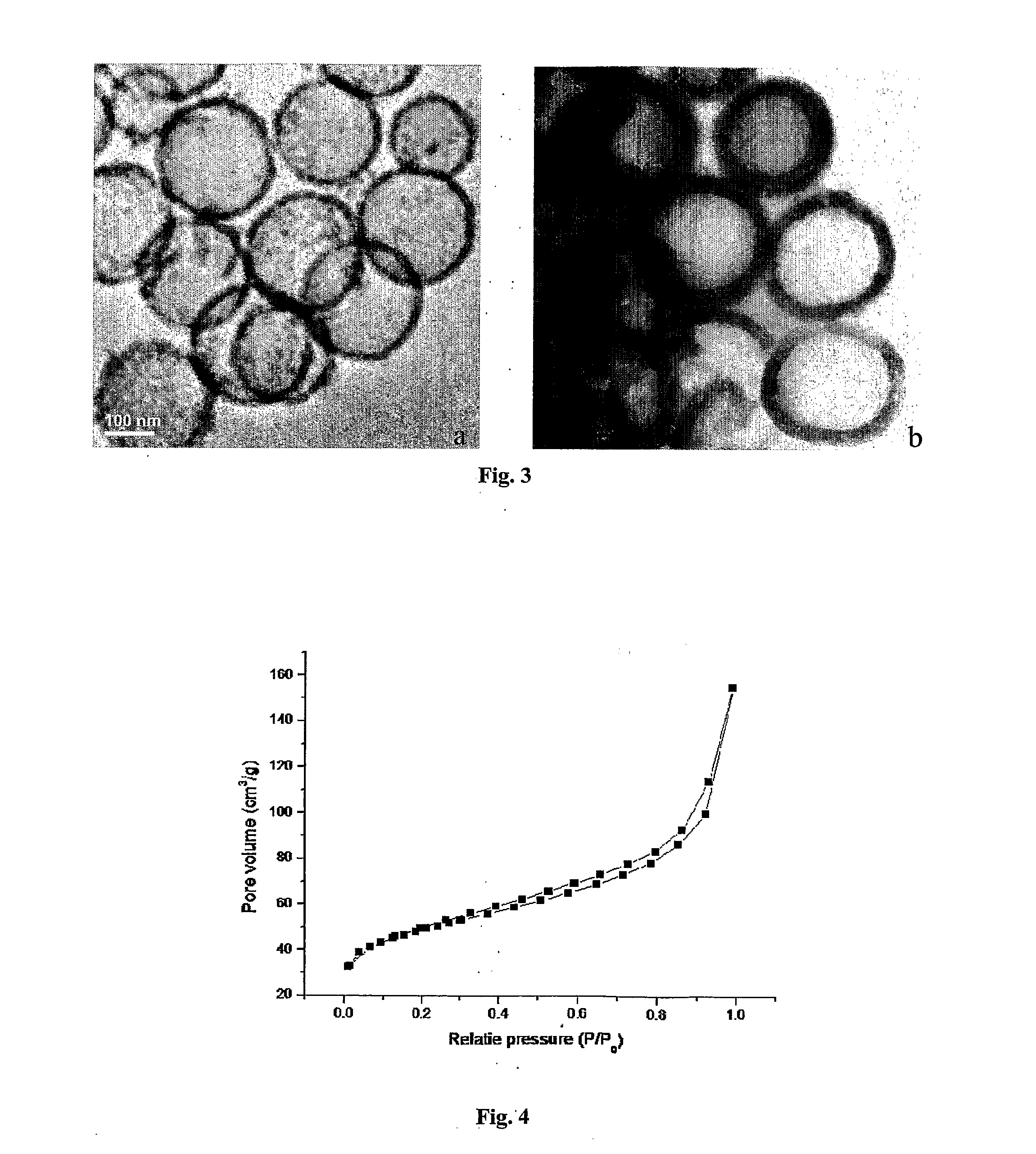Smart polymers functionalized hollow silica vesicles
a technology of smart polymers and hollow silica, which is applied in the direction of capsule delivery, nanotechnology, pharmaceutical non-active ingredients, etc., can solve the problems of poor stability of vesicles, poor stability of liposomes, and unstable fluidity of vesicles
- Summary
- Abstract
- Description
- Claims
- Application Information
AI Technical Summary
Benefits of technology
Problems solved by technology
Method used
Image
Examples
example 1
Preparation of Hollow Silica Spheres
[0088]Hollow silica can be prepared using polystyrene colloids as templates of sol-gel reaction of tetraethoxysilane (TEOS) followed by calcination. In a typical process, 3.0 g of poly(vinyl-pyrrolidone) (PVP) (Mw: 40 K) was dissolved in 100 mL of HPLC grade water under stirring for 24 hr at room temperature. Then 11.0 mL of styrene and 0.26 g of α,α′-azodiisobutyramidine dihydrochloride (AIBA) were added to the solution under stirring at 100 rpm and 70° C. under Argon. After 24 h, polystyrene colloid solution was obtained. 18 mL of polystyrene colloid solution was mixed with 240 mL of ethanol and 12 mL ammonia solution (NH4OH) (25 wt %). Then 3.18 mL of TEOS in 5 mL of ethanol was added dropwise, and the mixture was stirred at 50° C. for 24 h. The solid was collected by centrifugation and calcinated at 550° C. to get hollow silica particles. FIG. 1a is TGA curve of the obtained hollow silica, and FIG. 2a is TEM images of hollow silica. FIG. 3 is ...
example 2
Preparation of Hollow Silica Particles Functionalized with Amino Groups (HSilica-NH2)
[0089]Typically 2 g of hollow silica was dispersed in 90 mL of p-xylene. After 3 mL of 3-aminopropyl silane (APS) was added, the solution was stirred at 90° C. under Argon for 24 h. The solution was precipitated in ether. The solid was collected by filtration and was purified by washing with ether. FIG. 1b is the TGA curve of HSilica-NH2.
example 3
Preparation of Hollow Silica Attached with Initiator (HSilica-Br)
[0090]1.9 g of HSilica-NH2 was dispersed in 60 mL of dry chloroform in a 100 mL flask. After 1.7 mL of triethylamine was added into the solution, the flask was immersed in an ice-water bath, and 0.6 mL of 2-bromoisobutyryl bromide in 5 mL of chloroform was added dropwise. 1.5 h later, the flask was taken out and was stirred at ambient temperature for 4 h. Then the solution was filtrated through PTFE membranes with pores of diameter of 0.2 μm. The solid collected was washed with fresh chloroform for 5 times followed by drying under vacuum at 50° C. FIG. 1c is the TGA curve of HSilica-Br.
PUM
| Property | Measurement | Unit |
|---|---|---|
| Fraction | aaaaa | aaaaa |
| Fraction | aaaaa | aaaaa |
| Fraction | aaaaa | aaaaa |
Abstract
Description
Claims
Application Information
 Login to View More
Login to View More - R&D
- Intellectual Property
- Life Sciences
- Materials
- Tech Scout
- Unparalleled Data Quality
- Higher Quality Content
- 60% Fewer Hallucinations
Browse by: Latest US Patents, China's latest patents, Technical Efficacy Thesaurus, Application Domain, Technology Topic, Popular Technical Reports.
© 2025 PatSnap. All rights reserved.Legal|Privacy policy|Modern Slavery Act Transparency Statement|Sitemap|About US| Contact US: help@patsnap.com



